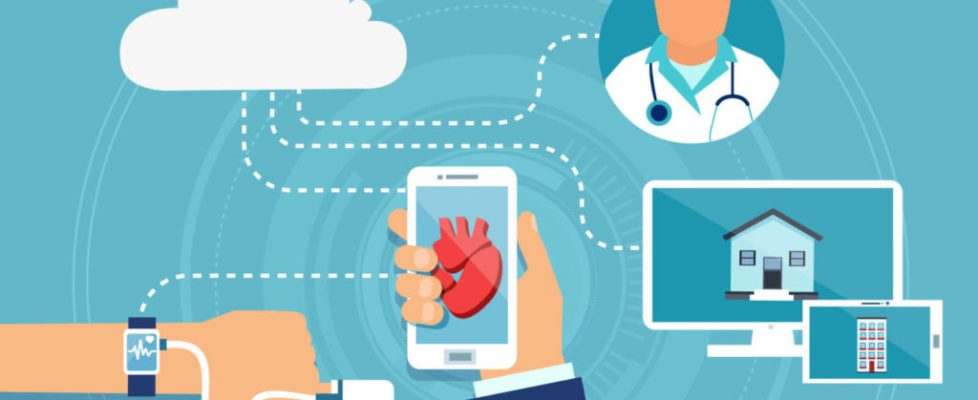Hospitals turn to remote monitoring tools to free up beds for the sickest coronavirus patients
Desperate to free up beds for only the sickest Covid-19 patients, hospitals nationwide are weighing the use of new technologies to monitor patients from their homes.
Physicians at several hospitals said their discussions with makers of these devices have kicked into high gear in recent days after the FDA issued guidance indicating it would not object to modifications in the use or functionality of remote patient monitoring tools during the outbreak.
Such tools rely on software and smartphones to track patients’ blood pressure, breathing, and temperature, as well as the functioning of their lungs, heart, and other vital organs. Most hospitals are already dramatically expanding the use of video and phone visits with patients, but remote monitoring of objective biological measures is considered the next step in their response.
“Traditional health care delivery is inadequate in dealing with this pandemic,” Raj Khandwalla, a physician and director of digital therapeutics for the Smidt Heart Institute at Cedars-Sinai Medical Center in Los Angeles. “We have to use a health care strategy that deploys resources throughout an entire community, and that’s where remote monitoring comes in.”NEWSLETTERS
Sign up for STAT Health Tech
Your weekly guide to how tech is transforming health care and life sciences.
U.S. caregivers are seeking to avoid the fate of Bergamo, Italy, where centralized care in hospitals appears to have contributed to a sharp rise in the infection rate and death toll, and left health care workers overwhelmed. Doctors in that city issued an urgent plea to counterparts across the globe last weekend to step up their efforts to care for more patients outside hospitals.
But quickly switching to new and untested methods of delivering care is a mammoth task, specialists said. It requires ramping up the supply of these digital tools, making sure doctors and patients are adequately trained to use them, and integrating them with other parts of a hospital’s technology infrastructure, including electronic record keeping systems.
“We’re not quite there yet because we’re really busy setting things up to take care of people coming into the hospital who need more intensive medical resources and monitoring,” said Paul Friedman, chair of cardiology at Mayo Clinic.
Like many hospitals, Mayo has already canceled elective surgeries and is using phone and video consults to handle outpatient visits. It’s also talking with makers of remote monitoring tools about ways to keep closer tabs on patients with Covid-19 who don’t require intensive care, as well as patients with chronic conditions such as heart failure who require careful management.
Mobile EKG maker AliveCor is in discussions with Mayo on specific use cases, as is Eko, a San Francisco-based company that has developed a digital stethoscope and EKG algorithms to flag certain heart abnormalities. The technology of both companies was tested on Mayo data and developed in partnership with its physicians.
“Every health system is racing to enable care remotely right now,” said Connor Landgraf, chief executive of Eko, whose technology is also being used for Covid-19 diagnosis by the University of Pittsburgh. He said the company is fielding increasing inquiries about its products, which enable providers to listen to heart and lung sounds wirelessly without direct contact with patients.Related:
Can location data from smartphones help slow the coronavirus? Facebook is giving academics a chance to try
While he said it’s important to carefully consider how the use of the technology in homes may affect care and outcomes for patients, the Covid-19 outbreak is not giving providers the luxury of time to study those impacts.
“It’s not a question of, ‘Are the products safe and effective?’” he said, noting its products have already been cleared by the FDA. “It’s really a question of, ‘Can we provide these devices to patients directly so that we can connect the physician and the patient virtually, and allow the [physicians] to keep providing excellent care during this time.”
The FDA’s guidance grants leeway to companies to expand distribution of products cleared for use in hospitals to also be used in patients’ homes, and it also allows companies and providers to use these products to help monitor and treat patients with Covid-19. The guidance limits the regulatory grace period to the duration of the outbreak, and only applies to products that have already received sign-off from the agency.
Chris McCann, chief executive of Current Health, a maker of an armband device that remotely monitors vital signs, said the number of U.S. health systems his company is working with has jumped 50 percent in the last week, to more than 30.
“The problem with Covid-19 is the demand on hospital capacity more than anything,” McCann said. “One of the things that’s gotten a bit forgotten in this is that a lot of patients need care who don’t have Covid-19, and some of them are at very, very high risk from the disease such as oncology patients. You want to keep them as far away as possible from Covid-19.”
Current’s products include a wearable monitoring device as well as symptom triage and video visits that can be conducted through a tablet computer. Those products are also available for use in hospital emergency departments.
Khandwalla, the Cedars-Sinai physician, said the hospital has not yet begun using remote monitoring tools to care for patients outside the hospital. But as the number of cases increases in Los Angeles, he said, the health system is going to have to broadly re-assess how and where to care for its patients.
“As this moves forward, trying to determine which group of patients can stay at home, and which group needs to stay at the hospital, is going to be difficult,” Khandwalla said. “Video visits help, but if we see pandemic levels of disease, we may need to preserve health care resources for only patients who need them, and remote monitoring may help us to triage those resources.”

